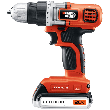Choosing the Right Compact Fluorescent Lights
Most, if not all, compact fluorescent lights (CFLs) are now equipped with a screw-in feature, so that replacing incandescent bulbs with CFLs is entirely possible. Yet, sometimes it's confusing as to which type of CFL to purchase for home use, since it seems as if there are many from which to choose. There are four main characteristics to consider when choosing CFLs for your home lamps, and they are wattage, light output, type, and color quality.
- Wattage. If you are satisfied with that 60-watt incandescent bulb in your living room lamp, and the 75-watt incandescent bulb in your reading lamp, then use the following simple equivalents to choose the correct CFL wattage for your current wattages: Trade a 40-watt incandescent for 9- to 11-watts of CFL; trade a 60-watt incandescent for 13 to 16 watts of CFL; and trade a 75-watt incandescent for 18- to 20-watts of CFL.
- Light Output. The ratio of CFL to incandescent light output is 1 to 3. For example, that 60-watt incandescent bulb is replaced by a 13- to 15-watt CFL. These ratios are typically listed on CFL packages now.
- Type. For use in regular light sockets in your home, you will need to purchase standard screw-in type CFLs with integral ballasts. There are many online sites dedicated to the types of CFLs you can choose for your home, based on your individual preferences and needs.
- Color. CFLs can mimic the colors of incandescent bulbs, in that you may choose from natural or daylight, cool or bright, and warm or soft white lighting. The overall quality of light is measured in Kelvin degrees (K).
When it comes to choosing the color for your CFLs, follow this short guide to choose the correct color temperature to suit your needs:
- Bright or cool light; choose 4,100K or higher color temperatures. Their descriptions may be bright white, cool, or natural.
- Warm or soft white; choose 2,700K to 3,000K for a warm glow such as that of an incandescent bulb. These are sometimes described as soft white.
- Natural, daylight, or very light; choose full spectrum bulbs since they tend to mimic full sunlight, such as what you would want for a reading lamp.
Speak with a qualified professional at your local home improvement or hardware store, and he can point you in the right direction when it comes to choosing the correct CFL. Make sure that you describe your preferences in lumens and color, so that you attain the desired outcome.
Author Bio
April Reinhardt
An administrator for a mutual fund management firm, April deals with the written word daily. She loves to write and plans to author a memoir in the near future. April attended Morehead State University to pursue a BA degree in Elementary Education. Learn more about April...
Trimming Your Own Bangs
Whether your hair is thick or fine, straight or curly, trimming your own bangs can be easy and satisfying when done ...
Discover More
Preventing Ants from Killing a Lemon Tree
To prevent ants from climbing your lemon tree, use a few common substances you probably already have on hand. Ants hate ...
Discover More
Replacing Damaged Sections of Carpeting
When replacing damaged sections of carpeting, you'll need a carpet remnant or leftover of the carpet you're replacing. If ...
Discover More
More Home Improvement Tips
Evaluating Home Energy Efficiency
For many homeowners, their energy bills are typically the costliest of their ongoing monthly expenses. The first step to ...
Discover More
Choosing Insulation
Insulation is one of the best ways possible to help make your home comfortable. Not only does insulation help heat your ...
Discover More
What are R-Values?
Have you ever wandered through the insulation aisle in your local home improvement store and seen noted on the products ...
Discover More

Comments